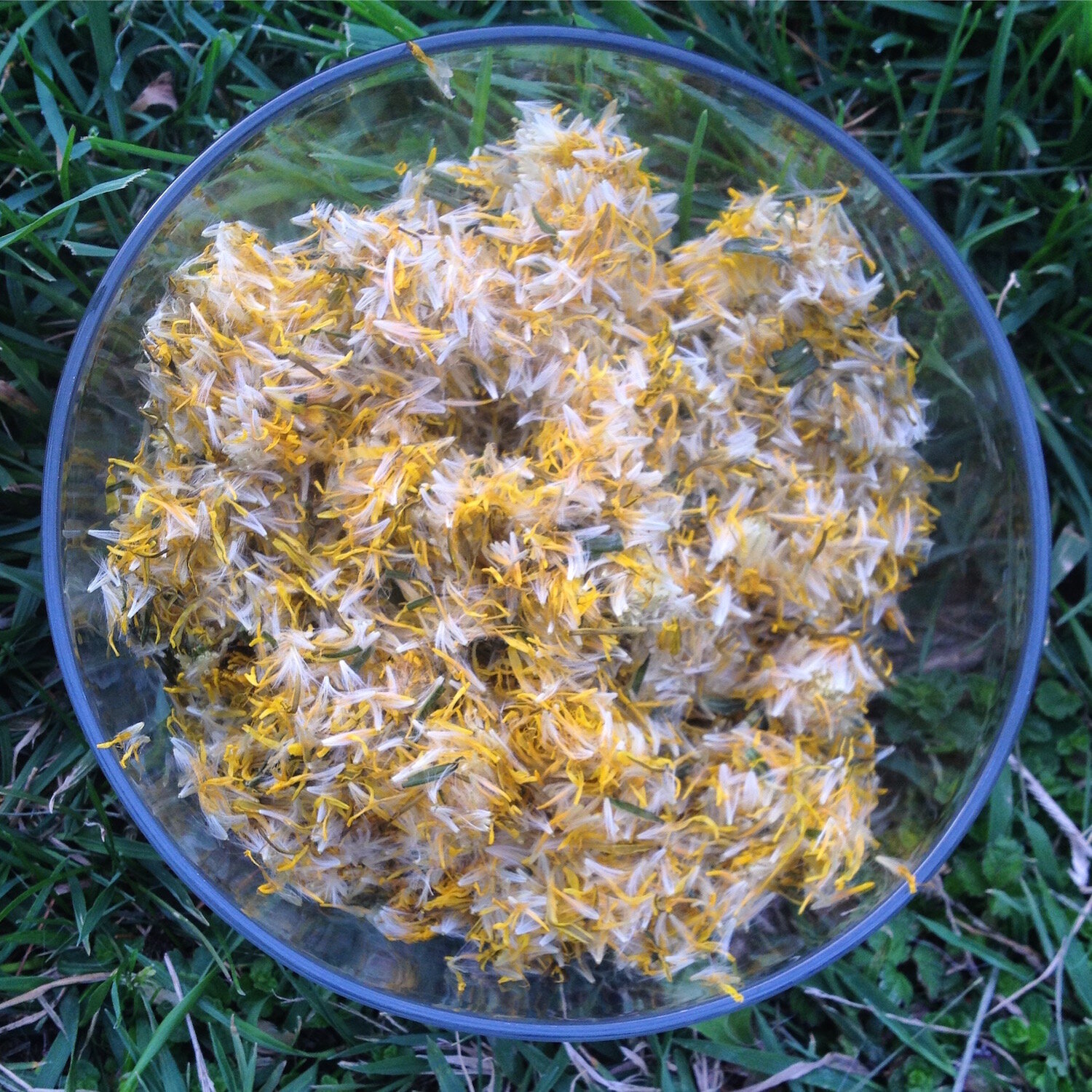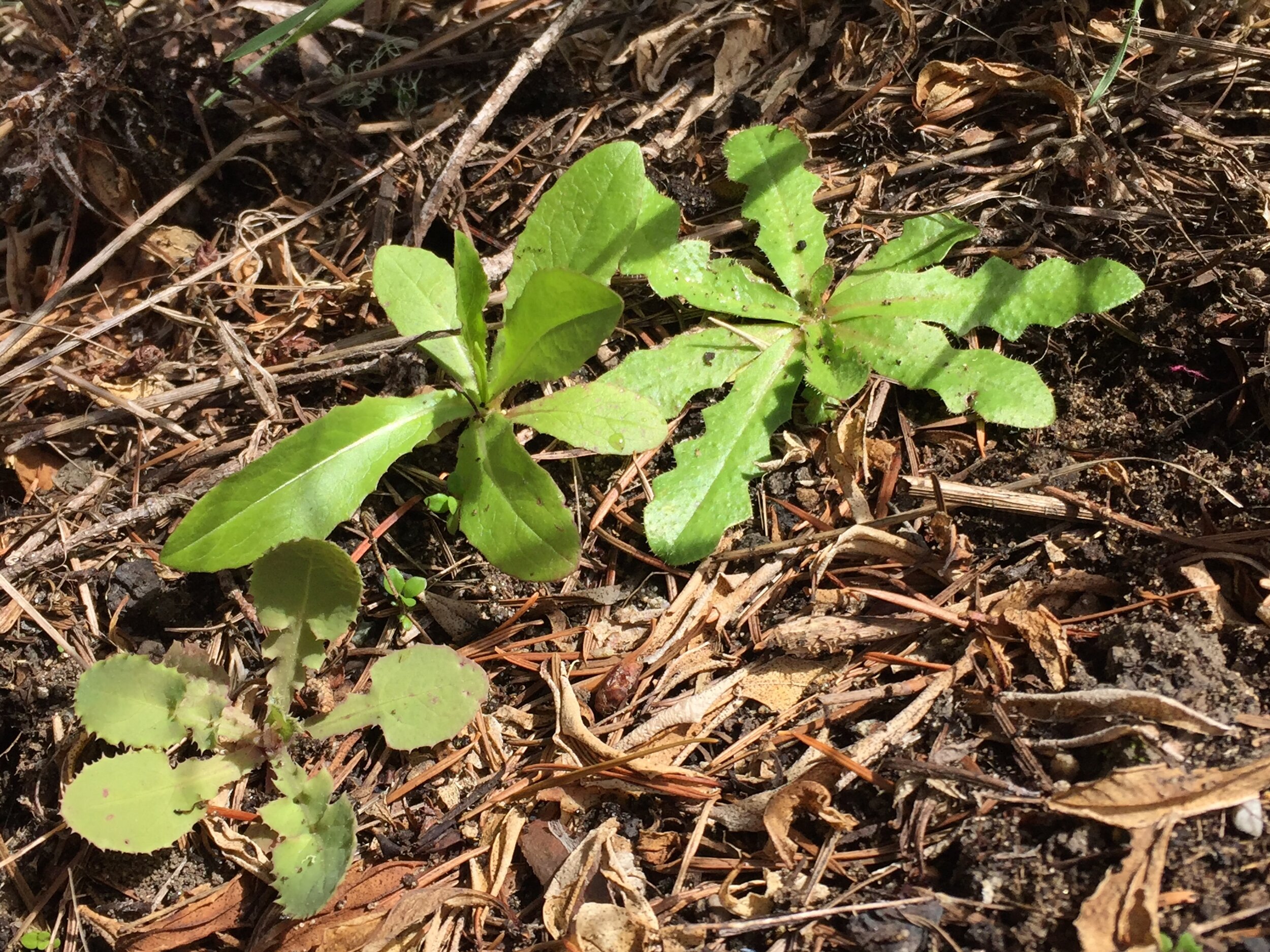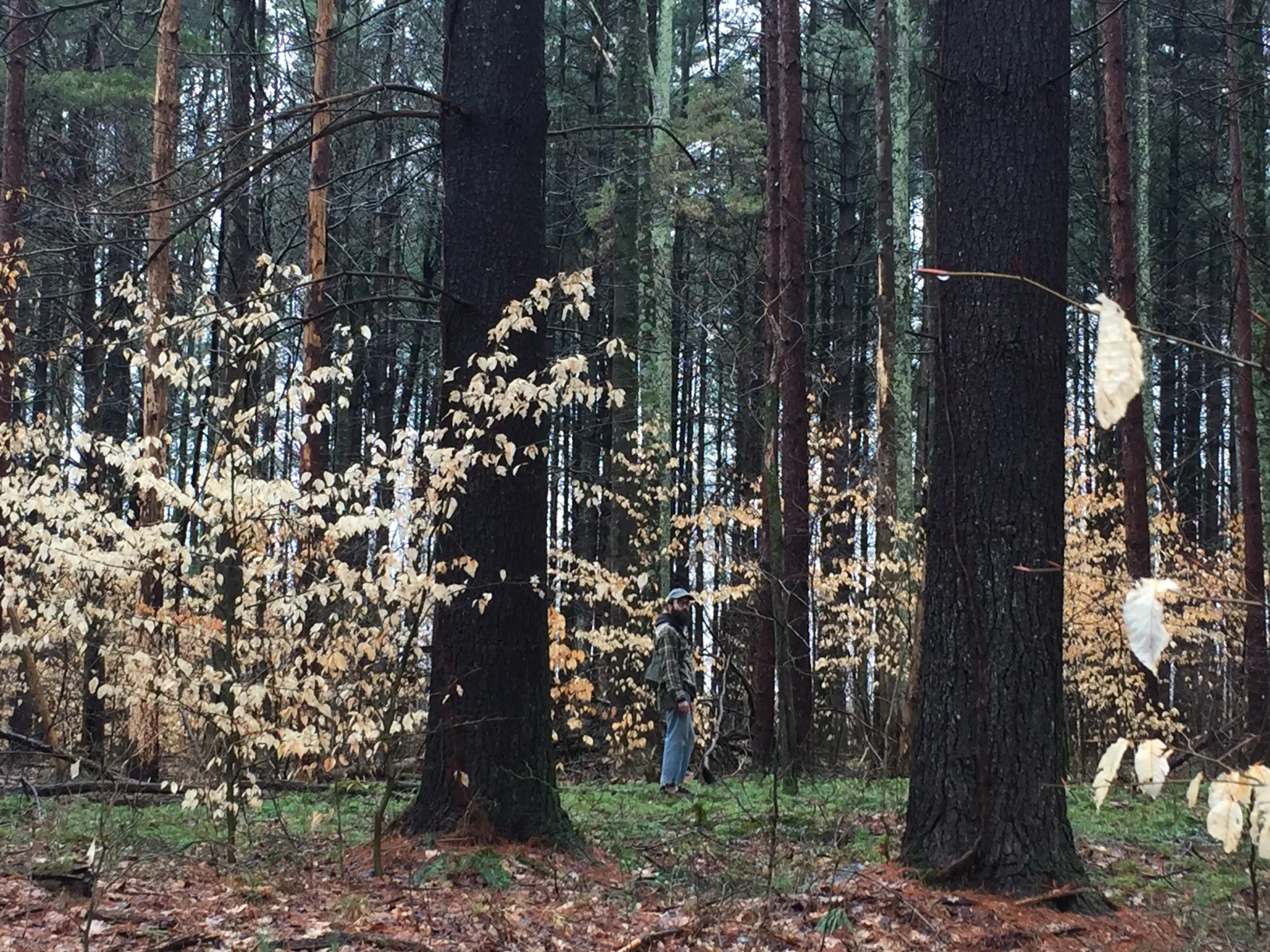Foraging for Dandelions, Wild Lettuce, and Edible Wild Lookalikes
Taraxacum officinale
Asteraceae (Aster / Sunflower) family, Cichorioideae (Chicory) subfamily, Cichorieae tribe
Many of the uses of T. officinale, as well as descriptions of its ecology and life cycle, also apply to its morphologically similar cousins in the Cichorieae tribe, such as Lactuca spp. (lettuce), Sonchus spp. (sow thistle), Hypochaeris spp. (cat’s ear), Hieracium spp. (hawkweed), and of course, Cichorium spp. (chicory) – though each of these is a worthwhile wild food with unique qualities all its own.
[Editor’s note: What the heck does all this Latin mean? Check out Foraging North America to learn more about the botany and taxonomy of edible wild plants.]See Lookalikes section for more on the common genera of this tribe.
Dandelions are one of the most ubiquitous and abundant cosmopolitan “weeds” on planet Earth; they are also a potent nutrient-dense perennial plant with a wide range of culinary and medicinal uses. All parts are edible.
Shade-grown springtime dandelions like these will have the least bitter, most palatable greens. Even so, many people would enjoy these greens more if lightly sautéed or boiled first.
Where to Find Dandelions:
A better question to ask might be, “where are dandelions not found?”
Dandelions and related species are especially common in lawns, gardens, roadsides, edges of trails and woodlands, and are not opposed to growing between cracks in the sidewalk.
As early successional species, they are often found sprouting up where nothing else will. And much like deer, mice, and raccoons, they actually thrive in the marginal spaces created by humans.
In fact, although originally native to Eurasia, the common dandelion has followed us all around the planet to just about every climate, ecosystem, and landscape that can host plant life.
T. officinale was probably intentionally introduced to North America, while other related Eurasian invaders hitched a ride over sometime in the last few centuries. Many other related species are native to this continent.
Dandelion leaves can vary quite a bit in shape and size, even on an individual specimen.
When to Forage for Dandelions
T. officinale is found through nearly all seasons of the year for most of its range, though it is best harvested early in spring.
Gather greens as early as possible in late winter/early spring before they become too bitter and unpalatable with maturity.
Harvest flowers whenever they’re present, usually for much of the spring and into summer. Sun-grown specimens will bloom earlier, while those in the shade may not produce flowers until much later.
Roots are best when dug as early as possible in the springtime, as soon as you notice leaves begin to emerge. At this time of year the plant is just beginning to awaken all of the nutrients stored in its roots, which it has not yet invested in new spring growth.
Why Eat Dandelions?
Dandelions are among the most useful — and until very recently in history, beloved — edible wild plants we have at our disposal.
When the greens first emerge in early spring, they’re considered to be a “tonifying” agent for the liver, helping the internal organs to adjust with the changing seasons.
These tender, young late-winter greens are ideal for eating raw.
The root can be made into a nutritious tea that’s great for aiding and relieving the digestive system. Some will describe this as a coffee substitute, but that obscures its unique value as a medicinal staple in the kitchen – where coffee excites the digestive system, dandelion root helps to calm it.
Many will find the bitterness of dandelions and related species to be a turn-off, at least initially. I speak from personal experience here. Picking the right specimens to eat – and then preparing them properly – can dramatically change your opinion. Over time you can acquire a taste for this bitterness, as I have, and your tongue will come to recognize the signal that a potent rush of nutrients is on the way.
When harvesting dandelion flowers, separate the white and yellow “fluff” from the green bracts to minimize bitterness.
How to Gather and Work With Dandelions:
Younger dandelions growing in cooler, wetter, shadier conditions will always be more palatable than mature specimens in full sun and dry conditions.
Leaves are easily harvested by plucking or cutting at the base. Depending on the aforementioned growing conditions — temperature, sunlight, moisture, maturity — the greens may be considered too bitter to consume raw. In that case, simply sautéing or boiling them for a moment will neutralize most of the bitter notes.
Separate the yellow composite flowers (I think of this as “flower fluff”) from the green bracts as you gather them to avoid introducing bitterness where you’d prefer the pure sweetness of the flowers. You will quickly develop a rhythm for tearing the fluff out as you go.
As with other edible wildflowers, dandelions are great for introducing wild yeasts to ferments. They can also be used to make dandelion wine, if you have copious amounts of sugar you’re willing to part with.
Flower buds may be gathered before they open and prepared as a substitute for capers.
Roots are best prepared through a multi-step process of rinsing, slicing, and dehydrating; chopping, roasting, and grinding; then steeping in boiling water for a hearty, earthy tea.
If you’ve never tried it before, you may want to see what you think of the commercially available roasted dandelion root tea at your local supermarket or health food store before you commit to this labor-intensive process. If you really love the stuff, you’ll relish the real deal when it comes time to prepare your own.
Key characteristics:
“Lion’s tooth” (dent-de-lion in French) leaf margins pointing back to the center of the rosette
Yellow composite inflorescences composed entirely of strap-shaped ray flowers — no disk flowers present
Naked, hollow flower stems that exude a milky sap when cut
Washing freshly harvested dandelion roots in order to make tea.
Cultivating a Relationship With Dandelions:
If you’ve ever observed a dandelion sprouting through the concrete like some kind of magic trick on an austere urban landscape, then you know that they don’t need our help to thrive.
That said, if you have an existing patch in your lawn or garden and you want to encourage them to spread, it’s usually enough to just leave them alone to carry out their life cycle. If you keep a close eye on the flowers from day to day you might be able to grab the wispy seeds before they drift away so you can intentionally scatter them wherever you’d like to see them in the near future. Otherwise, I’m told that they can travel several miles via the wind before they land.
You will sometimes see cultivated dandelion greens sold at farmer’s markets or in seed catalogs. In fact, these are usually domesticated varieties of the closely related chicory, which has very similar morphology but a less bitter flavor, generally. Seeds are readily available through purveyors of heirloom crops and worth seeking out if you’re a serious dandelion fan who can’t get enough.
Lookalikes:
You may have heard of a ‘false dandelion’ before — in fact, there are many closely related species in the Cichorieae tribe that could be mistaken for one another, all found in similar niches around the globe. They are all (theoretically) edible, but don’t let that fact lead you to overestimating your confidence in identifying a potential dandelion cousin you’ve never come across before – remember how huge the Asteraceae family is.
Cat’s ear, Hypochaeris radicata, is easily mistaken for a dandelion but is also edible.
As mentioned in the Who section at the top, common ‘false dandelions’ include the lettuces, the sow thistles, the cat’s ears, the chicories, and the hawkweeds, among others.
Each of these has a similar size, shape, growth habit and seasonality when young; and with the exception of chicory – which has a blue composite flower – all of these genera produce yellow flowers that look very similar to dandelions
If you’re ever in doubt about a potential dandelion specimen, compare it with photos and descriptions of these genera and species to help narrow down a positive identification:
Cichorium – chicory – C. intybus
Hypochaeris – cat’s ear – H. radicata
Lactuca – lettuce – L. canadensis, L. serriola, L. ludoviciana
Sonchus – sow thistle – S. oleraceus
Hieracium – hawkweed – H. lachenalii
Sow thistle, S. oleraceus, has dandelion-like flowers and seeds, but they are produced in clusters on branched stems with leaves attached. This is my personal favorite from the tribe.
Rather than describe each one here – they all deserve their own individual profiles, and I could go on for days! – it may be simpler to list the traits that distinguish the ‘true’ dandelion from its potential lookalikes:
Dandelions are always low-growing basal rosettes –
others will send up a substantial vegetative stalk as the season progresses
Dandelions have hollow flower stems
Dandelion leaves have variable toothed edges with teeth pointing to the center of the plant –
this will become easier to distinguish as you encounter more species from the tribe
Dandelions have no hairs on leaves or stems –
Cat’s ears have hairy leaves and flower stems
Dandelions have no leaves on flower stems, and the stems are not branched –
others will produce branched stems with multiple leaves and/or flowers
Dandelions have only one flower per stem –
others will produce clusters of flowers
Dandelions have no spines on margins or underside of leaves –
some sow thistles have spiny margins, and some lettuces have spiny ridges on the underside of the leaves
Left to right: spiny sow thistle, wild lettuce, cat’s ear – three common edible cousins of the dandelion with comparable culinary uses.
Did you find this article helpful?
This is an excerpt from Foraging North America: The Botany, Taxonomy and Ecology of Edible Wild Plants.
Foraging North America is a 12-week online course designed to arm you with a functional working knowledge of botany and taxonomy that you can take with you out onto the land to fast-track the ID process and boost your confidence when gathering wild foods for the first (or five-hundredth!) time.
My mission in presenting this information to you is to promote ecological literacy alongside an ethos of “conservation through use” — the (surprisingly) radical notion that humans can, in fact, have a positive impact on the environments that we move through.
Nothing makes me happier than introducing people to the edible wild plant allies who surround us at all times. Food is everywhere — you just need to know how to look!











